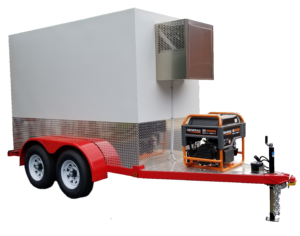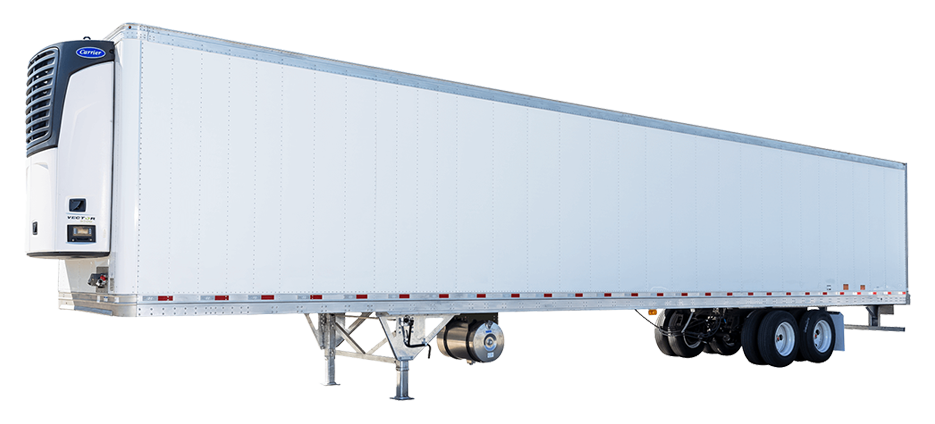Cooler Trailers - Small Refrigerated Trailers And Freezer Trailer for Beginners
Wiki Article
What Does Cooler Trailers - Small Refrigerated Trailers And Freezer Trailer Mean?
Table of ContentsCooler Trailers - Small Refrigerated Trailers And Freezer Trailer Things To Know Before You Get ThisThings about Cooler Trailers - Small Refrigerated Trailers And Freezer TrailerCooler Trailers - Small Refrigerated Trailers And Freezer Trailer Fundamentals ExplainedAn Unbiased View of Cooler Trailers - Small Refrigerated Trailers And Freezer Trailer

They are also more economical than various other types of trailers, such as reefers (temperature-controlled semi-trailers). Dry vans supply even more cargo area than reefers, since they do not have to fit temperature-control tools. mobile refrigeration. https://www.evernote.com/shard/s504/sh/cc17950c-3399-e1f5-8ed4-ce802b681423/zQ1f4kOKIDSsWQOZZTcLsR44L2sGgslqaIzq45Me6KAM4V-GXY0WtlDE6g. This makes them optimal for deliveries that are too huge for a reefer, such as furniture or bulk products
Dry van trailers likewise have a couple of negative aspects. One is that they can not carry subject to spoiling or temperature-sensitive assets.
When delivering cargo that is not subject to spoiling or temperature-sensitive, completely dry van trailers supply a cost effective and convenient alternative. If you have a shipment that needs defense from outdoors aspects and doesn't call for temperature control, completely dry van shipping is the means to go. Ask for a totally free quote from Products, Center today and we'll aid you get your shipment in a completely dry van and when driving.
The smart Trick of Cooler Trailers - Small Refrigerated Trailers And Freezer Trailer That Nobody is Talking About
The four trailer types noted above are the most frequently used on the planet of Less-Than-Truckload (LTL) and Truck-Load (TL) delivery, and compose a majority of the semi-trailers when driving (https://www.imdb.com/user/ur173723121/). There are likewise a selection of various other semi-trailer types that carry items from factor A to factor B on a daily basis
These semi-trailers supply boosted stability and motion, making them optimal for carrying heavy animals over fars away. Flatbed small refrigerated trailer trailers are the most common sort of livestock trailers, as they can quickly connect to any type of kind of car. These trailers use a wide, open area for livestock, making them ideal for delivering big pets such as cattle.
These trailers provide security from the aspects and keep animals protected throughout transport. Those who are looking to transport brief or long distances ought to take into consideration these options when choosing the best trailer for their needs.
The 45-Second Trick For Cooler Trailers - Small Refrigerated Trailers And Freezer Trailer
The other area maintains your animals safe as you carry or post up for the evening - mobile refrigeration. This kind of trailer is for shorter distances and can rest easily in the bed of a pickup truck for simple loading, unloading, and carrying. No issue what kind of animals trailer you pick, it is necessary to guarantee that it prepares to securely move your pets
Axle spacing describes the range in between the axles on the trailer. The greater the range, the a lot more secure the trailer will be. Lots distribution is how evenly the weight of the freight is spread out across the trailer. If you do not disperse weight uniformly, it can trigger instability and make turning or quiting difficult.
Knowledge with these laws is necessary to prevent prospective fines or penalties. Food vessels help transport things that need to be moved following production. These semi-trailers have an unique design that enables them to transfer these products securely and under stringent policies. Food tankers are an integral part of the food supply chain since they give a risk-free and efficient means to move large quantities of food items.
Cooler Trailers - Small Refrigerated Trailers And Freezer Trailer Fundamentals Explained
Stainless steel is the favored selection for food tankers due to the fact that it fulfills both of these demands. Some vessels may likewise lug other types of gas, such as ethanol or biodiesel.
Baffles separate the gas vessel's areas. Baffles additionally develop pockets of air, which act as cushions in the event of an accident.
The most typical kind of chemical vessel is the stainless-steel tanker. These vessels are immune to rust and can safely transfer a wide variety of chemicals. However, some chemicals are so corrosive that they call for using an FRP vessel. FRP vessels include fiberglass-reinforced plastic, which is inert to several harsh materials.
These drivers should understand just how to properly load and unload the tankers, as well as how to securely deliver them. They need to likewise know the risks that come with the chemicals they are lugging and take safety measures to stay clear of spills or leaks. The farming organization uses a wide range of semi-trailers, from planting to harvest.
Report this wiki page